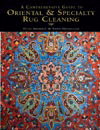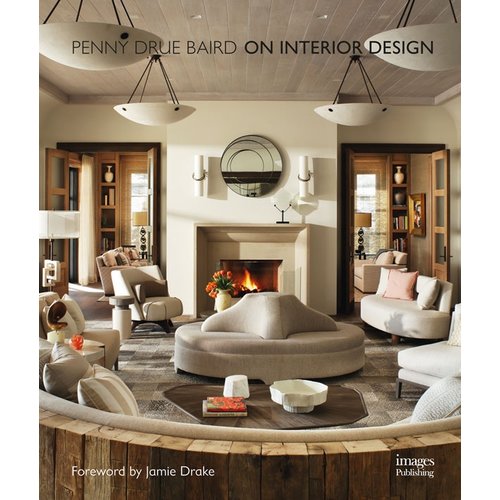Let’s TalkFloor
Mohawk's Carson, Lape Talk Innovation and a Better PET

Mohawk’s patent-pending Continuum process is a $180 million investment that creates a cleaner polyester, one that has less dirt-attracting residue and oily substances than traditional polyester, yet maintains the fiber’s inherent stain resistance properties.

Mohawk markets its polyester carpets made from recycled plastic bottles under its EverStrand brand.

Tom Lape

Brian Carson

Part of the reason Mohawk is able to achieve a cleaner product is by using bottles with a higher grade of polyester resin than is typically used in carpet fiber.





Mohawk upped the ante in the synthetic fiber area a couple of years ago with the introduction of SmartStrand, bringing built-in soil and stain resistance and new levels of durability to carpet, not to mention putting sustainability in the industry on a new plane.
In September the company announced another investment in fiber technology. This time in the form of a $180 million venture aimed at producing a better polyester (PET).
Noting most retailers recognize inherent performance limitations exist with PET carpets, Brian Carson, president, Mohawk Flooring and Tom Lape, the mill’s president of market advance joined us on TalkFloor.comto discuss this development which resulted in a patent-pending process called Continuum, and is based on the company’s desire to engineer a better PET product.
You can find this conversation in the “Floor Radio” archives on the the website, which can also be access through the Floor Trendswebsite, floortrendsmag.com. There’s a great deal more than space permits, but here are some excerpts of that conversation to whet your appetite:
TF: Give us an overview of this new PET effort. How big is it; what’s involved?
Tom Lape: Mohawk Continuum is our effort to pull together a presentation for retailers of what we’re doing in the polyester space. Polyester today represents a market that is in excess of $1.5 billion. When we studied the market we looked for ways we could innovate, just like we did have done with the SmartStrand and triexta innovations we have brought to market and the soft nylon and soft polyesters.
The question was: How we can take that same innovation machine and make a better polyester product for consumers and retailers today. The Continuum process is about a cleaner process, which creates a cleaner product and it also creates a cleaner planet.
Brian Carson: Everybody knows the polyester category has grown dramatically in the last five years and at low prices and there hasn’t been a [great deal] of innovation and differentiation in the category. Mohawk has taken its creative and innovative talents along with a sizable investment to really redefine the way we make polyester filament.
We not only have produced a product that’s good for the planet with high recycled content but we’re doing it by actually using bottles with a higher grade of polyester resin than is typically used in carpet fiber.
That gets you superior strength in the fiber and we’re able to do that at extremely high efficiencies, [which] creates a superior product and differentiation in a product that is otherwise an undifferentiated category. And, we’re excited about it.
TF: Does the carpet you produce using the Continuum process resist soil buildup and stand up to traffic better?
Tom Lape: You have to start with where polyester fits. It’s a very good product for carpet but it’s not a solution for every consumer and every installation.
The challenge then becomes, how do you make the best polyester carpet? Keep in mind we make the best carpet in the world today [in] triexta SmartStrand and SmartStrand Silk and we think they offer the best attributes to make the best performing carpet in the world today. They have a little higher cost associated with them so the question becomes, if you’re in more value oriented polyesters, how can you make a better polyester?
More and more solution dyed polyesters are not scoured. There are reports in the industry of some excessive soiling and some soiling issues associated with, not just solution dyed polyester but often it’s associated with products that have spin finish oils on them.
We looked at part of the challenge being that if we’re going to build a better polyester how we can address this issue head-on, realizing that polyesters are inherently a hydrophilic fiber, which attracts oily based soil.
We set out to build around that and we worked very hard both on the polymer that’s being used, using now what we believe is a better grade of polymer on the input. [Also], how can we work on the scouring process to make [it] more robust and strip more of those oils off as well as how can we go out in the market and find best-in-class fluorocarbons for end of market treatment to make sure we [not only] lock in that performance attribute [but] soil and stain resistance.
We really built this product from the ground up. Our questions were: Isn’t it a tragedy when you look at a $1.5 billion segment of the industry that really doesn’t have a high degree of differentiation? And secondly, How can we take the innovation machine at Mohawk and provide that differentiation for retailers along with a story for consumers of essentially why this is a better product and a better solution for their home? This is what Continuum really represents.
Editor’s note: There’s a great deal more to this conversation dealing with the properties and the breath of products to be offered as a result of the Continuum process, the price range and the timing. To listen to the three-part interview, “Mohawk’s Carson & Lape on the New Continuum P.E.T. Process,” in its entirety visit floortrendsmag.com/talkfloor and scroll to the link on the right side of the page called “More Floor Radio.”
Looking for a reprint of this article?
From high-res PDFs to custom plaques, order your copy today!








.jpg?t=1690771780)





